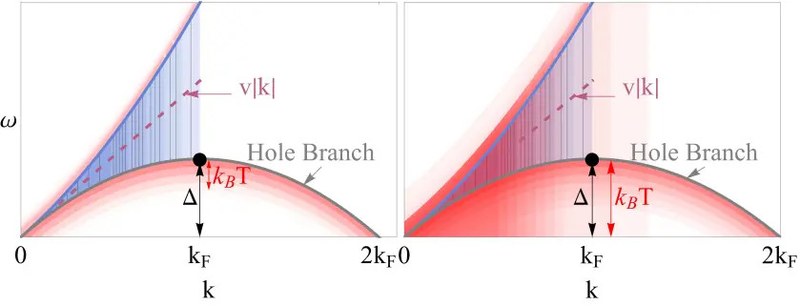Unmasking the microscopic fingerprint in finite-temperature features of a one-dimensional Bose gas
Dec 20, 2022
A team of researchers from UPC in Barcelona and EPFL in Lausanne built a new theory to explain the finite-temperature properties in terms of microscopic excitations of bosons in one dimension
An ensemble of particles moving along one spatial dimension looks deceivingly straightforward, but it is actually an extremely complex system due to the intricate interplay of quantum effects, interparticle collisions and thermal motion.
Understanding the thermal properties of a set of bosonic particles with pairwise contact repulsive interactions is fundamental to basic research and the development of emerging quantum technologies, quantum computers and engineering innovative materials including high-critical-temperature superconductors. One-dimensional Bose systems have been experimentally realized since 2004 with ultracold atomic gases.
A problem which remained unsolved until now was the global understanding of the effects of the microscopic excitations on the temperature-dependence of the thermodynamic properties for any interaction.
In a study published in SciPost Physics, researchers Giulia De Rosi, Grigori Astrakharchik and Jordi Boronat at Universitat Politècnica de Catalunya (UPC) together with Riccardo Rota at École Polytechnique Fédérale de Lausanne (EPFL), demonstrated that the novel hole anomaly (i.e. the peak in the temperature-dependence of the specific heat) is due to the thermal occupation of states located below the hole branch in the excitation spectrum. At the anomaly temperature, there is the breakdown of the quasiparticle description of excitations holding at lower temperatures. These features of the hole anomaly around the critical temperature are also shared by certain phase transitions and crossovers in one dimension.
This study will foster further investigations aiming at characterizing collisions in one-dimensional Bose gases and providing new methods for the measurement of temperature in ultracold atom experiments. The new hole anomaly may be used as a quantum simulator of other anomalies in atomic, solid-state, electronic and spin systems.

Share: